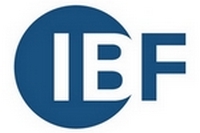Veranstalter:
IBF Solutions GmbH
Bahnhofstraße 8
A-6682 Vils
Seminarsuche:
❱ www.ibf-solutions.com/

WEBINAR: Efficient CE marking and risk assessment of machines and plants - 2472-WEB-E
In just two days you will learn how to meet the requirements of the Machinery Directive as efficiently as possible and what you need to do and document in the context of risk assessments.
In just two days you will learn how to meet the requirements of the Machinery Directive as efficiently as possible and what you need to do and document in the context of risk assessments.
Bildungsanbieter:
IBF Solutions GmbH
Veranstaltungsart:
Webinar
Themenfeld:
CE-Kennzeichnung/Grundlagen
Ort:
1 Online
Beginn:
28-01-2025
Ende:
29-01-2025
Preis in €:
1.440 EUR
Detailbeschreibung:
We have been providing knowledge with seminars on the CE marking of machines since 1994.
The aim of this seminar is to give you and your employees a quick overview of,
- the requirements that directives and standards place on designers,
- how standards can be used as valuable sources of knowledge and
- how you can meet the legal requirements as quickly, efficiently and unbureaucratically as possible.
Key success factors: Safe design + efficient CE processes
This legal requirement for the integration of safety in the design processes is one of the most important success factors for the development of sufficiently safe machines or plants!
Therefore, we focus the first day of this seminar to the practical implementation of the legal requirements in the daily design processes - without legal details! Pure practical relevance!
On the second day, you will learn everything you need to know to carry out the legally required conformity assessment procedure efficiently and pragmatically.
Seminar: CE Marking according to Machinery Directive
Seminar program
Day 1: Designing safe machinery - Risk assessment in practice
Introduction and Overview
- The important role of the designers in the CE processes.
- Introductory example: Why seemingly good solutions do not always meet the legal requirements.
- Legally required risk assessment: WHO has to do WHAT and WHEN?
- Cooperation between different departments: mechanical engineering, control engineering, technical documentation, etc.
- Safety arises (mostly) in a team: important interfaces to sub-suppliers and customers.
- What does "integration of safety" mean?
- Which standards support safe design? Do these have to be applied?
- Caution when delegating design work or risk assessments to third parties!
- Attention! The design must be based on the law, not (only) on customer requirements!
Systematic risk assessment according to EN ISO 12100
- Risk assessment according to EN ISO 12100 - How the legal requirements are met as efficiently as possible!
- What has to be considered in "reasonably foreseeable misuse" - and what not.
- Figure 1 from EN ISO 12100 as a perfect guide through risk assessment and risk reduction.
- Relationships between EN ISO 12100 and the control engineering standards EN ISO 13849-1 and EN ISO 13849-2.
Technical and design requirements
- Which technical requirements are required by law.
- Strategies for the "inherently safe design".
- Why non-separating protective devices (e.g. light curtains) are not always suitable for achieving the required risk reduction.
- Calculation example for electro-sensitive protective devices (ESPEs).
- What you should pay attention to when selecting protective devices (separating or non-separating).
- When protective devices have to be interlocked - when guard lockings are required.
With the help of several exercises and examples, you will learn the practical approach to pragmatically identifying relevant hazards in the design process, assessing the associated risks and selecting and documenting suitable (and economically justifiable) solutions for risk reduction.
You will find out why design engineers tend to exaggerate safety-related solutions and sometimes result in high costs for their company or customers. Less is often more - but only according to the legally permitted concept!
Day 2: Efficient CE marking according to the machine directive
Response to basic questions:
- The two most important points for the efficient implementation of the requirements of the Machinery Directive.
- What are the risks in the event of non-compliance with the machinery directive?
- What causes high "CE costs" and how can these be reduced?
- Who signs the declaration of conformity? What are the requirements?
- Does it make sense to install someone "responsible" for the CE marking, e.g. a CE coordinator or CE manager?
- Why these people usually cannot take responsibility for all design details and why the designers remain responsible.
- In which cases the use of external service providers can be worthwhile, for which they can take responsibility and for what not.
Step by step to the CE marking - legally secure and systematic:
- Efficient project start: Why it is important to define the "limits of the machine" as early as possible.
- Classification of the product according to the Machinery Directive: machine, partly complete machine, interchangeable equipment, etc.
- When do several independent machines become "assemblies of machinery” "?
- Which directives must be observed in addition to the machinery directive?
- Harmonized standards: What does "presumption of conformity" mean?
- Short repetition: Risk assessments (details are explained on the first day of the seminar).
- Arrange technical file: Content, language requirements, significance in the event of complaints from authorities and courts.
- Why it is important to also observe the formal requirements (language, form, etc.) of the instructions manual and assembly instructions.
Cooperation between various specialist departments or sub-suppliers:
- Inspection obligations when purchasing machines and components
- What sales brochures have to do with product liability.
- Can buyers trust CE?
- Modification of machines: In which cases are you dealing with an “important change / substantial modification” and what does that imply?
- What interfaces exist between the departments or companies involved in a project (especially in industrial plant construction)?
Discussions, exercises and examples enliven the course of the seminar.